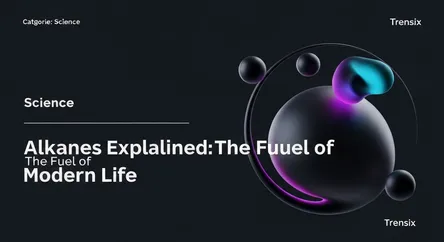Science
Alkanes Explained: The Fuel of Modern Life

A simple guide to alkanes, the saturated hydrocarbons that form the basis of gasoline, natural gas, and many everyday products.
What is it?
Alkanes are a fundamental class of organic compounds known as saturated hydrocarbons. This means they consist entirely of hydrogen (H) and carbon (C) atoms connected by single bonds, with no double or triple bonds. Their general chemical formula is CnH2n+2. The simplest alkane is methane (CH4), the main component of natural gas. Alkanes can be straight-chain, branched, or form rings (cycloalkanes). The primary commercial sources for these compounds are natural gas and crude oil, making them a cornerstone of the chemical industry.
Why is it trending?
Alkanes are perpetually relevant due to their central role in the global energy economy. They are the principal components of fossil fuels, and as conversations around energy consumption, climate change, and the transition to renewables intensify, understanding alkanes is crucial. Their chemical simplicity makes them a foundational topic in organic chemistry, serving as a baseline for studying more complex molecules. Ongoing research focuses on cleaner combustion and more efficient "cracking" processes, which break down long-chain alkanes into more valuable ones like those found in gasoline.
How does it affect people?
Alkanes are integral to modern life. Shorter-chain alkanes like propane and butane are used as liquefied petroleum gas (LPG) for heating and cooking. Those with 5 to 12 carbon atoms, such as octane, are the main components of gasoline that fuel cars. Longer-chain alkanes are found in diesel, jet fuel, and lubricating oils. Even solid alkanes are used, forming paraffin wax for candles and petroleum jelly for skincare. From generating electricity to powering transportation and manufacturing goods, society's infrastructure is heavily dependent on the energy released from burning alkanes.